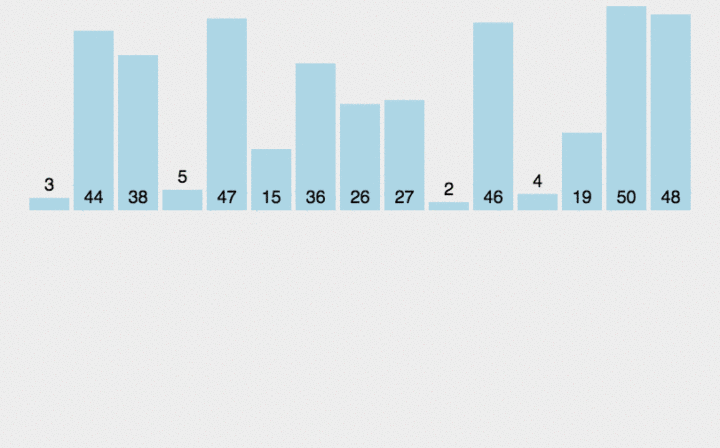也称为直接插入排序、简单插入排序等。插入排序的工作原理是通过构建有序序列,对于未排序数据,在已排序序列中从后向前扫描,找到相应位置并插入。插入排序在实现上,通常采用in-place排序(即只需用到O(1)的额外空间的排序),因而在从后向前扫描过程中,需要反复把已排序元素逐步向后挪位,为最新元素提供插入空间
算法要点
- 将一个序列中的数据分成两个部分,从前到后依次为有序序列和无序序列
- 遍历拿到每一个无序序列中的元素,将其与有序序列中的元素从后到前依次比较,如果逆序,则将有序序列中的数据向后移动一位,否则,将拿到的元素放在当前有序序列元素的后面
- 直到将所有的无序序列全部插入到有序序列中
- 时间复杂度为O(n^2)
- 开始时,可以将序列中的第一个元素算作有序序列,其他的元素算作无序序列
动图演示

代码示例
1
2
3
4
5
6
7
8
9
10
11
12
13
14
15
16
17
18
19
20
21
22
23
24
25
26
27
28
29
30
31
32
33
34
35
| package Sort;
public class Sort {
public int[] insertionSort(int[] data)
{
int insertionValue;
int insertIndex;
for (int i = 1; i < data.length; i++) {
insertionValue = data[i];
insertIndex = i;
while (insertIndex > 0) {
if (insertionValue < data[insertIndex - 1]) {
data[insertIndex] = data[insertIndex - 1];
} else {
break;
}
insertIndex--;
}
data[insertIndex] = insertionValue;
}
return data;
}
}
|
